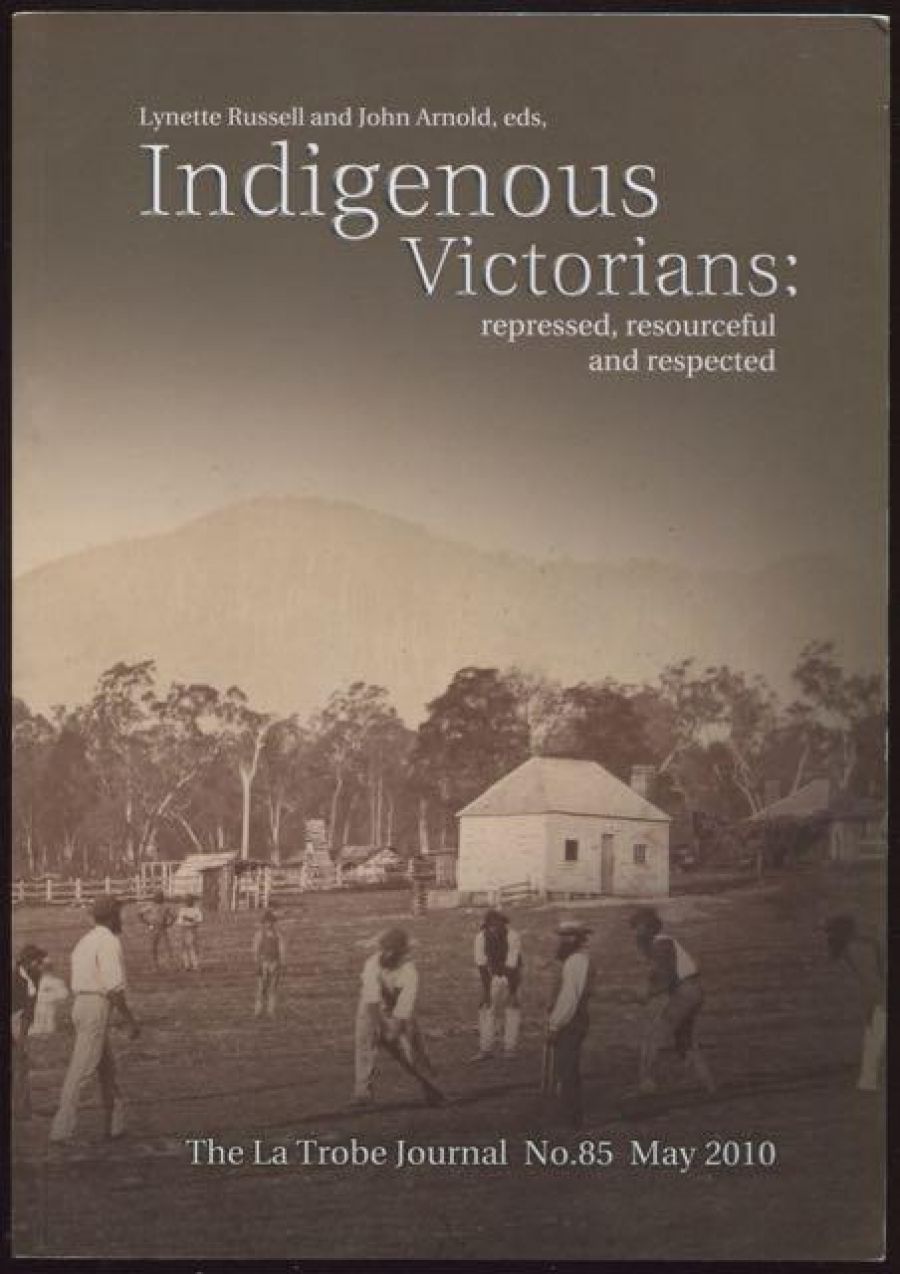
- Free Article: No
- Contents Category: Journal
- Review Article: Yes
- Online Only: No
- Custom Highlight Text:
This special issue of La Trobe Journal is guest edited by Lynette Russell from Monash University, and John Arnold, the Journal’s new general editor (since No. 82). Titled Indigenous Victorians: Repressed, Resourceful and Respected, it showcases new historical scholarship that draws on the State Library of Victoria’s unrivalled collections. Topics covered in the twelve essays are diverse: Aboriginal guides to the Victorian goldfields, fisheries in western Victoria, cricketers at Coranderrk, Lake Tyers Aboriginal settlement, the Victorian Aboriginal Advancement League, and government legislation relating to Aboriginal Victorians, among others.
- Book 1 Title: Indigenous Victorians
- Book 1 Subtitle: The La Trobe Journal, no. 85
- Book 1 Biblio: State Library of Victoria, $35 pb, 208 pp
Ian D. Clark uses George Augustus Robinson’s private journal to examine the uneasy relationship he had with Charles La Trobe. The pair had responsibility for the Port Phillip Aboriginal Protectorate in the 1840s, so their relationship had implications for Aboriginal people. Victoria Haskins and Shannon Schedlich-Day use a ‘pioneer memoir’ to explore the friendship in the 1870s between a young white domestic servant, Minnie Brewer, and an Aboriginal girl about the same age. They appreciate Minnie’s accounts of her ‘mate Ellen’ as having ‘a refreshing individuality and, despite an undeniable element of racist paternalism, a sense of humanity that is often lacking in other colonial accounts of cross-cultural encounters’.
A scrapbook compiled by Scottish pastoralist James Dawson, sometime Local Guardian of Aborigines in western Victoria, is the focus of Raymond Madden’s essay. Madden is intrigued by the scrapbook because it reveals Dawson’s positive views about, and advocacy for, Aboriginal people alongside his highly negative attitudes toward the Irish. These divergent positions, he argues, were borne of personal experience.
Barry Judd uses a photograph of Aboriginal men playing cricket at Coranderrk in the 1870s as the starting point for a nuanced discussion about the ways in which Aboriginal people negotiated and accommodated the new social order in which they found themselves. He begins by drawing attention to the one cricketer who looks directly at the camera. This creates, Judd suggests, ‘an intimacy between this subject and the viewer insofar as he appears to us an individual not simply a member of the team’. Like other pieces in the collection, the author’s own eye remains fixed on the personal and the particular, interpreted through wider contexts.
While most of the essays are historical studies, two are concerned with contemporary Aboriginal people’s engagement with collections preserved by public institutions such as the State Library of Victoria and the Melbourne Museum. The essay by Maxine Briggs, Jane Lydon and Madeleine Say canvases interpretative and ethical issues concerning the use and management of the Library’s photographic collections of Victorian Aboriginal people. The authors evocatively suggest that for Aboriginal people today photographs are not mere historical documents; they are objects possessing the presence of the people portrayed. Briggs, the Library’s Aboriginal Liaison Officer, says ‘they are in fact the actual person caught in a frozen moment’. The power of historical objects and archives to connect contemporary Aboriginal people with ‘lost’ pasts is examined by Helen Gibbins in her essay on the work of Victorian artists Lee Darroch, Vicki Couzens and others in reviving the practice of making possum skin rugs.
This is the second volume of The La Trobe Journal devoted to Victoria’s Koori history; the last was published twenty years ago. Much has happened in the interim. Digitisation has increased access to collections in unprecedented ways, bringing with it challenges concerning ownership and copyright. The State Library of Victoria has responded by developing close working relationships with Aboriginal people and communities. At the same time, research into Aboriginal history has flourished. Whereas the earlier volume showcased sources awaiting serious study, this edition reveals the fruits of sustained inquiry and interpretation. Lynette Russell concludes her introductory essay expressing the hope that ‘this volume might make an important contribution to our understanding of Aboriginal Victorian History, and perhaps in time become, like its 1989 predecessor, a “classic”’. It is an ambition likely to be realised.


Comments powered by CComment